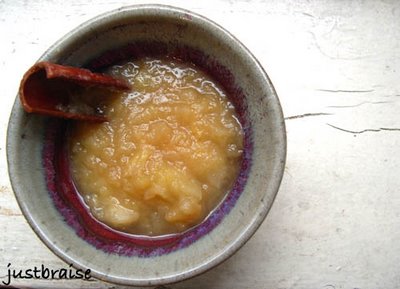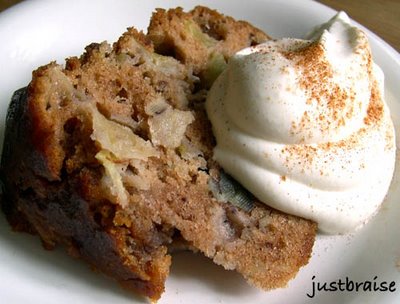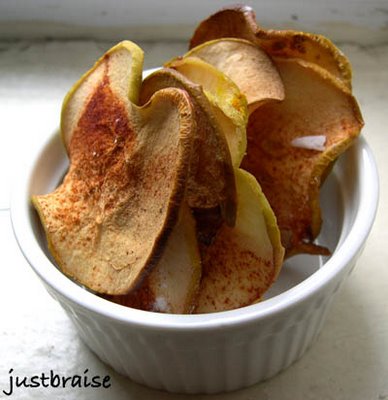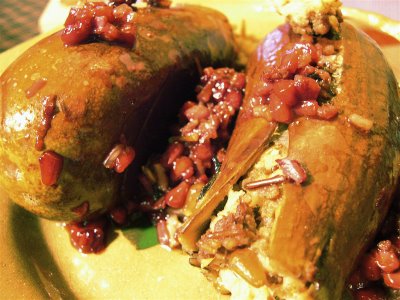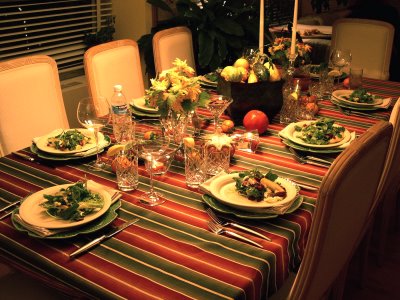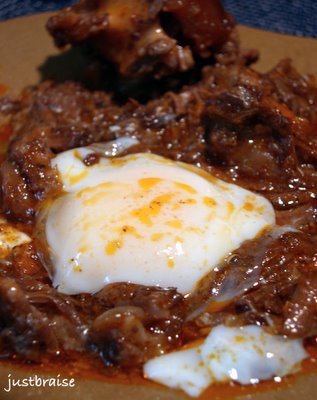
*Just Braise has moved. Please visit me at www.justbraise.com!*
As stated earlier, on a recent B&N trip, I “picked up” a few recipes from the book I was perusing. This one struck my eye (even though the picture does it no justice) because it sounded exotic: oxtail and baked eggs. I never thought to bake an egg before, other than a frittata. D being a huge carnivore, I knew he would be down for oxtails. We invited two other meat-lovers over and planned our day.
First, I must admit that when eating certain foods that resemble animals a little too much, contain too many bones, or are a little too gamey, I regress back to my vegetarian days. For six years (much to my mother’s objections and sneaking meat into my food) I was essentially animal-less. I broke down when studying in the meatastic city of Prague and am now a mostly happy meat-eater. Like many others I have met, the word oxtail can give me the meat-willies, but this recipe sounded too good to pass up. So all ye who fear the tail I say go forth!
What is oxtail? And why? Back in the day when oxen actually pulled our wagons cross country and got all yoked up, the oxtail consumed actually was the meat from the tail of oxen. Being thrifty folk and not wanting any part of the animal go to waste, the oxtail was consumed, often in a soup or hearty stew. As oxen have gone out of style and the use of cattle has become widespread, we again refuse to let any meat go to waste. Oxtail as we know it today is the tail meat from cows (of both genders).
Like all things fashionable, there are highs and lows. It is only recently that oxtail has returned to fashion. I have read fewer than twenty years ago, oxtails were so unpopular the meat was practically given away. It was a secret joy for chefs to use oxtail because the cost was so low ($1-2 a pound). Today, though not outrageous, old fans of oxtail shutter in horror as they dish out up to $6 a pound for quality “unwanted” meat. Oxtail seems to be the new “it” meat, recently springing up in restaurants all over town.
The first time I took notice to oxtail I was with D at his favorite feel-good-food joint Soul Spot. Ran by two men from The Gambia, these boys have nailed the southern cooking New Yorkers crave. An easy-to-miss whole-in-the-wall favorite of bus drivers, police, and locals alike, the Spot serves up choice of meat and two sides for an easy $10. I would usually order the chicken: jerk or BBQ, while D would switch up between meatloaf and oxtail both dripping in savory sauces. With trepidation—come on, what’s in name?— I tried the oxtail. I was hooked.
Like short ribs the “oxtail” meat can be a little tough so slow cooking is advised. This is where the braise comes into play, allowing the meat to fall right off the bone and enter the succulence stage. Oxtail tastes like any other “less than ideal” cut of beef, most resembling brisket (although it depends how it is cooked), so it is not to be shied away from. It makes an interesting, exotic sounding, and delicious alternative to the usual purchases, and should definitely be tried.
As a brunch item, this dish reminds me of The Joy of Cooking’s “Hunter’s Breakfast” which consists of about 10 different courses, from quail to ostrich eggs. More closely, it is similar to D’s favorite menu item at Norma’s: The Hudson Valley Duck Confit Hash a Cheval, consisting of a full duck and 4 eggs. D orders this with a huge grin and sops up all the sauce with their fresh baked bread, dribbling juice and laughing at the rest of the patrons pick at their jazzed up eggs (I recommend the Zillion Dollar Lobster Frittata, with “we dare you to expense this” as the price—okay, I’ve never had it, but the Artychoke Benedict is darn good).
This recipe takes a little planning (I marinated the oxtail in wine overnight). If it is made for brunch, remember it needs 2-½ - 3 hours of cook time so prepare it well before guests arrive, or quench the appetite with the perfect Bloody Mary (recipe below). I planned ahead and bought double what I thought 4 people could consume so I would have plenty of leftovers (which is recommended since the cooking process is lengthy). Much to my surprise, the leftovers were few: enough for a smaller brunch the following day. This meal is well worth it and is so hearty it serves as the only necessary meal of the day (we were good and content until about 11pm when we had a small snack of fresh mozzarella and tomatoes).
I know the picture is not fantastic, but this meal is. Anyone that has had it can attest to it. When the egg’s sunshine breaks loose and the juices mix, this dish is divine—just have some good bread on hand for the sauce. A Bloody Mary is a perfect accompaniment to this dish: The tangy horseradish is an ideal palate cleanser. Be a man, enjoy this dish, call the dogs, sound the horns, and go hunting.
BRAISE OXTAIL W/ BAKED EGGS
Serves 5. Prep time= 20 minutes. Cook time= 2-½- 3 hours.
* 4 lbs oxtail
* 1 bottle red wine (I used the inexpensive, but quite tasty $5 Gato Negro)
* 2 celery stalks, cut into 1-inch pieces
* 2 carrots, cut into 1-inch pieces
* 1 small onion, cut into quarters
* 1-5 oz can tomato paste
* salt/ pepper
* 1 Tbl dry parsley
* 5 eggs
1) Place the oxtail in a wide bowl with 1 bottle red wine. Marinate at least overnight, up to 2 days. If the wine does not cover all the meat, rotate and flip pieces every so often.
2) Preheat the oven to 400F. Warm an oven-safe pot (dutch oven) over medium-high heat. Remove the oxtail from the wine (save the wine). Dry off the oxtail and rub well with salt and fresh ground pepper. Brown all sides of the meat in the (dry) pot. This can be done in 2 rounds, takes about 3 minutes on all sides. This locks the meat moisture in. Remove and set aside.
3) In the meat juices, sauté the celery, carrots and onion, about 8 minutes until onions begin to soften. Add the tomato paste, reserved wine and parsley; stir to blend evenly. Add the oxtail (liquid should come just to the top, but not covering the oxtail. Add a little water, about 1 cup, if this is not the case) and cover tightly. Bake in middle of the oven for 2-½- 3 hours. Meat is done when it falls off the bone with little effort. Check the braising process once every hour to ensure liquid is still present. Add a little water if too much liquid evaporates (some liquid will cook off, but you want some sauce for the meal).
4) When meat is ready, remove from the oven and de-bone (reserving the bones for a future soup or stew). Push the vegetables through a large sieve (or mash with a potato masher) to create a thick sauce. Return the meat to the pot. Using the back of a large ladle, create 5 divots and crack one egg in each divot. Bake 10 minutes so eggs are just white and still runny.
NOTE: To be served with a Perfect Bloody Mary, recipe below.
THE PERFECT BLOODY MARY
Serves 4. Prep time= 8 minutes. Inactive time= 1 hour.
* 1 liter quality tomato juice, with no additives (I think Looza makes an excellent line of juices and nectars and should definitely be purchased if available.)
* juice of 1 lemon
* juice of 1 lime
* 1 Tbl Worchester Sauce
* 1 Tbl hot sauce
* 5 Tbl quality fresh, plain white horseradish
* 1 Tbl celery seeds
* fresh pepper to taste
* 1 Tbl balsamic vinegar
* 8 ounces vodka
* celery stalk with leaves for garnish (olives or pickled green beans work well too)
1) In a pitcher, mix tomato juice, lemon juice, lime juice, Worcester sauce, hot sauce, horseradish, celery seeds and fresh pepper. Cover and place in refrigerator for 1 hour.
2) When ready to serve, remove from refrigerator and stir well. Pour 2 oz vodka into each glass (4), add tomato mixture (another tsp horseradish is optional). Add celery garnish. Gently pour the balsamic vinegar over the top of the tomato mixture so it floats. This provides an excellent visual and olfactory effect. Once served, mix and enjoy.
NOTE: A good Bloody Mary starts in the juice. If one uses a poor quality juice, the final product will taste off. I have had this happen. Do not attempt it at home. The taste of a dish depends on the quality of the products used.
ON HOT SAUCE: I am by no means a hot sauce expert, but I do like a little flame every once in a while. I have foodie friends from New Orleans that will add Tabasco to everything. I surprised them with some Dragon’s Fire Hot Sauce from Greene’s Gourmet in Vermont. (D and I picked some up during a camping trip.) This boutique sauce is made with ginger root which we were told makes the sauce extra hot because it opens the sinuses giving one full onslaught of the pepper—the Naw’lins boys were speechless.







